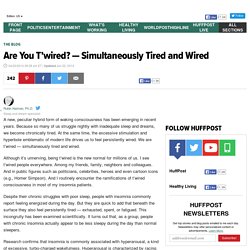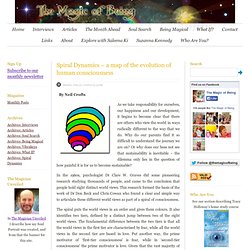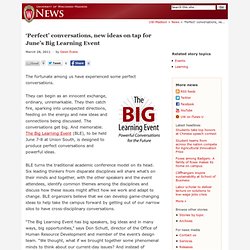

What to Say When Someone Cries at Work. When someone cries at work, showing curiosity and compassion, even if you’re uncomfortable, is core to being an emotionally intelligent leader.

What should you say to someone who’s crying at work? Try something like: “Let’s pause for a moment here.... I was recently coaching a leader who asked me, “Is it OK for me to tell someone on my team that they can’t cry at work?” Normally, as a coach, I would respond to her question with a question of my own: “What makes you ask that?” “What about crying feels like it shouldn’t happen at work?” “What might the impact be of telling them that they can’t cry at work?” But instead of taking a coaching approach, I responded instinctively and firmly, “No.” We know from Tom Hanks in A League of Their Own that “there’s no crying in baseball,” but no movie that I’ve watched has given us a clear answer on what to do about crying at work.
Lisa Godwin: How teachers can help students navigate trauma. (1) Mind is Everything. (1) Why the majority is always wrong. Tak Auyeung's answer to What is the best way to get along with an INTP? Matt McGuire's answer to Why are INTPs so forgetful? Quora. Reclaim Power. How do smart people make smart decisions? Simultaneously Tired and Wired. A new, peculiar hybrid form of waking consciousness has been emerging in recent years.

Because so many of us struggle nightly with inadequate sleep and dreams, we become chronically tired. At the same time, the excessive stimulation and hyperbole emblematic of modern life drives us to feel persistently wired. We are t’wired — simultaneously tired and wired. Although it’s unnerving, being t’wired is the new normal for millions of us. I see t’wired people everywhere. Despite their chronic struggles with poor sleep, people with insomnia commonly report feeling energized during the day. Research confirms that insomnia is commonly associated with hyperarousal, a kind of excessive, turbo-charged wakefulness. While hyperarousal strongly draws us upward, sleepiness and fatigue simultaneously drag us down. We are stuck in relentlessness.
We live in a world of unrelenting motion, a world that discourages slowing and stopping, a world that has lost its sense of rhythm and regard for rest. Oddly Developed Types. (The following is an excerpt from The Secret Lives of INTPs.

I release this chapter into the public domain.) In this chapter, we will review the literature on type and ADD and compare the symptoms of being an INTP with the symptoms of having ADD. Then we will compare the symptoms of having ADD/ADHD with the symptoms of being a normal, typical INTP. So, is type related to ADD/ADHD? Yes, in some ways. Keirsey argued that ADHD is a false label targeted at the Artisans (read here, here). Ben Ambridge: 10 myths about psychology, debunked. 7th Level Code- Yellow in Spiral Dynamics Integral. Archives: Sprial Dynamics - The Magic Of Being. By Neil Crofts As we take responsibility for ourselves, our happiness and our development, it begins to become clear that there are others who view the world in ways radically different to the way that we do.

Why do our parents find it so difficult to understand the journey we are on? Or why does our boss not see that sustainability is inevitable – the dilemma only lies in the question of how painful it is for us to become sustainable? In the 1960s, psychologist Dr Clare W. Graves did some pioneering research studying thousands of people, and came to the conclusion that people hold eight distinct world views. The spiral puts the world views in an order and gives them colours.
The other big difference between first-tier and second-tier consciousness is that each of the levels in the first tier find it difficult to understand or value the others. This is very important—I want you to see the interconnection.
‘Perfect’ conversations, new ideas on tap for June’s Big Learning Event (March 28, 2011) The fortunate among us have experienced some perfect conversations.

They can begin as an innocent exchange, ordinary, unremarkable. They then catch fire, sparking into unexpected directions, feeding on the energy and new ideas and connections being discussed. The conversations get big. And memorable. The Big Learning Event (BLE), to be held June 7-8 at Union South, is designed to produce perfect conversations and powerful ideas. BLE turns the traditional academic conference model on its head. “The Big Learning Event has big speakers, big ideas and in many ways, big opportunities,” says Don Schutt, director of the Office of Human Resource Development and member of the event’s design team.
To get the conversations rolling, each speaker will give a brief talk, which will be followed by a moderated group conversation. Individually, the featured speakers participating are remarkable. Mihaly Csikszentmihalyi is a psychologist best known for the idea of flow and creativity. Take the Chakra Test and Open Your 7 Chakras.
Fear and anxiety. Perfectionism. Relationships. Assertiveness.